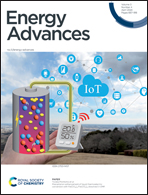Machine learning-based screening of Mn-PNP catalysts for the CO2 reduction reaction using a region-wise ligand-encoded feature matrix†
Abstract
The CO2 reduction reaction is a promising way to reduce the CO2 level in the environment and most importantly to produce C1-based chemicals (HCOOH and CH3OH) that can be used as liquid fuels and industrial chemicals. In this regard, homogeneous Mn-PNP based catalysts are found to be suitable for the reaction and show promising potential for enhancing activity through ligand modification. Herein, a novel ligand encoded feature matrix enabled machine learning (ML) model has been developed to screen efficient catalysts from a large search space of earth-abundant aromatic Mn-PNP catalysts using the effects of different ligands present on the different ligand sphere of the catalysts. The ML models based on gradient boosting (GBR and XGBR) were found to be the best performing ML models with a density functional theory (DFT) level of accuracy. Potential catalysts for HCOOH and CH3OH formation are identified based on the overall reaction free energy barrier through ML + DFT. The importance of different regions (R1 and R2) and the effect of ligand substituents (+I/−I) in the catalyst are unleashed. Furthermore, a favorable mechanism to produce HCOOH has been ascertained.

- This article is part of the themed collections: Research advancing UN SDG 7: Affordable and clean energy and Research advancing UN SDG 13: Climate Action


 Please wait while we load your content...
Please wait while we load your content...